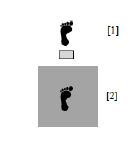Dynamic Stability

The Effect of Jump-Landing Directions on Dynamic Stability
Kathy Liu and Gary D. Heise
Dynamic stability is often measured by time-to-stabilization (TTS), which is calculated from the dwindling fluctuations of ground reaction force (GRF) components over time. Common protocols of dynamic stability research have involved forward or vertical jumps, neglecting different jump-landing directions. Therefore, the purpose of the present investigation was to examine the influence of different jump-landing directions on TTS. Twenty healthy participants (9 male, 11 female; age = 28 ± 4 years; body mass = 73.3 ± 21.5 kg; body height = 173.4 ± 10.5 cm) completed the Multi-Directional Dynamic Stability Protocol hopping tasks from four different directions: forward, lateral, medial, and backward; landing single-legged onto the force plate. TTS was calculated for each component of the GRF (ap = anterior-posterior; ml = mediallateral; v = vertical) and was based on a sequential averaging technique. All TTS measures showed a statistically significant main effect for jump-landing direction. TTSml showed significantly longer times for landings from the medial and lateral directions (Medial: 4.10 ± 0.21s, Lateral: 4.24 ± 0.15s, Forward: 1.48 ± 0.59s, Backward: 1.42 ± 0.37s), while TTSap showed significantly longer times for landings from the forward and backward directions (Forward:4.53±0.17s, Backward:4.34 0.35s, Medial:1.18±0.49s, Lateral:1.11±0.43s). TTSv showed a significantly shorter time for the forward direction compared to all other landing directions (Forward: 2.62 ± 0.31s, Backward: 2.82 ± 0.29s, Medial: 2.91 ± 0.31s, Lateral: 2.86 ± 0.32s). Based on these results, multiple jump-landing directions should be considered when
assessing dynamic stability.

